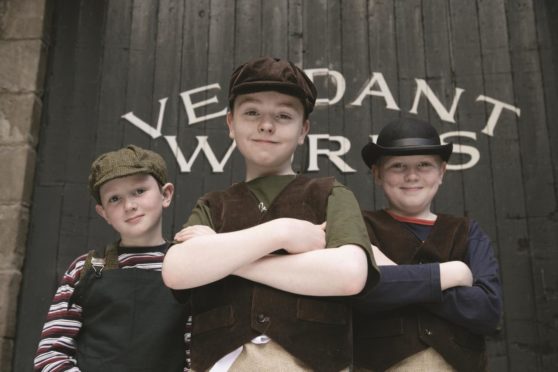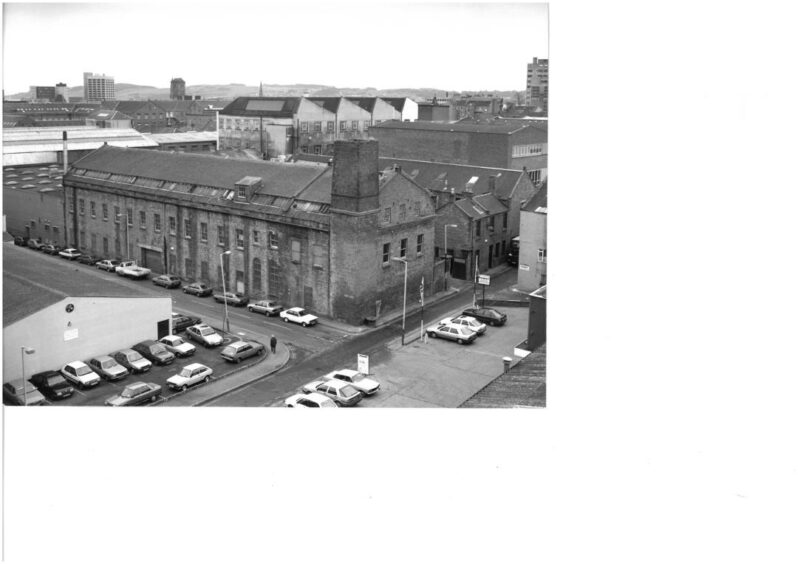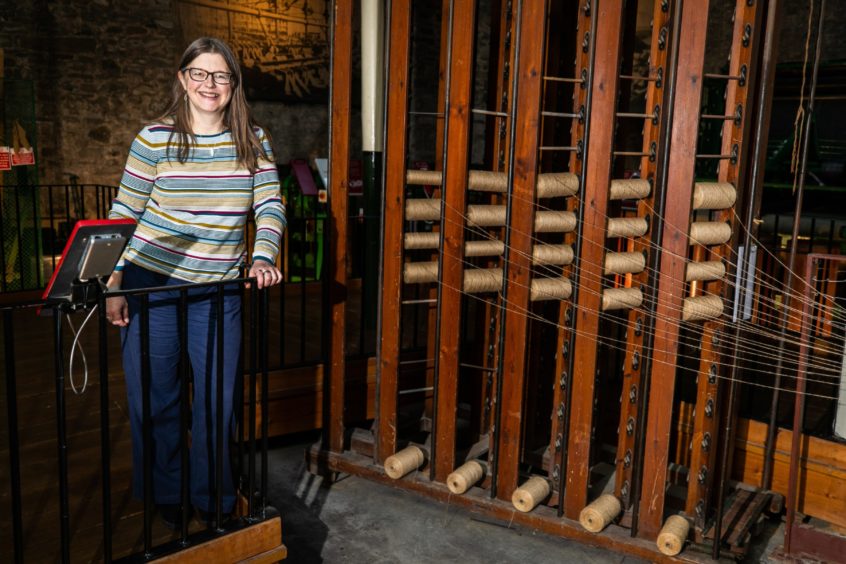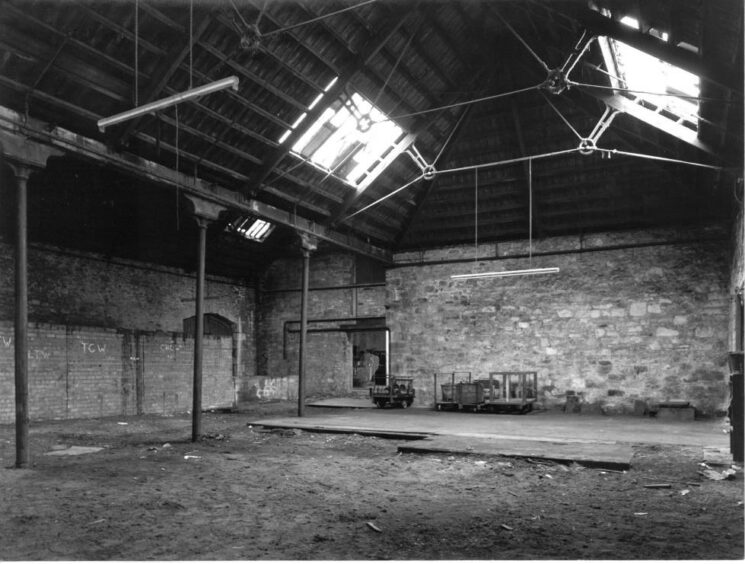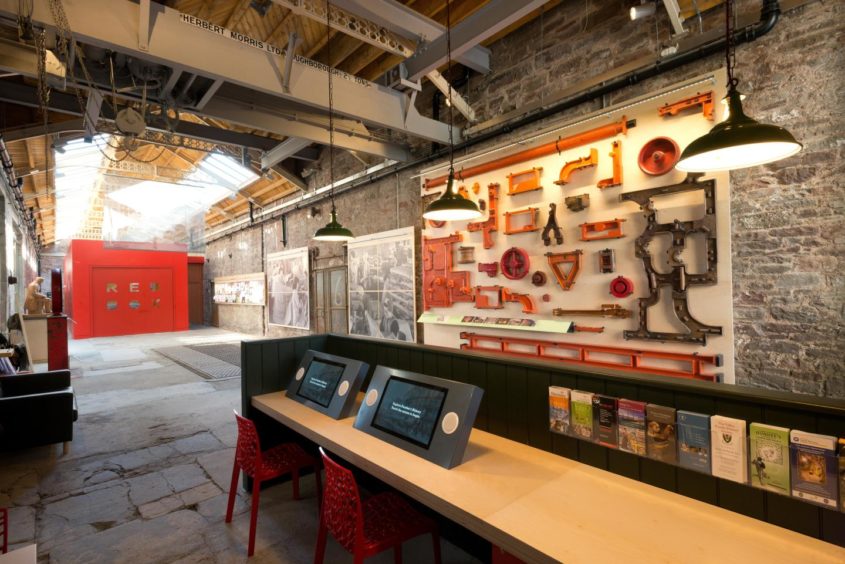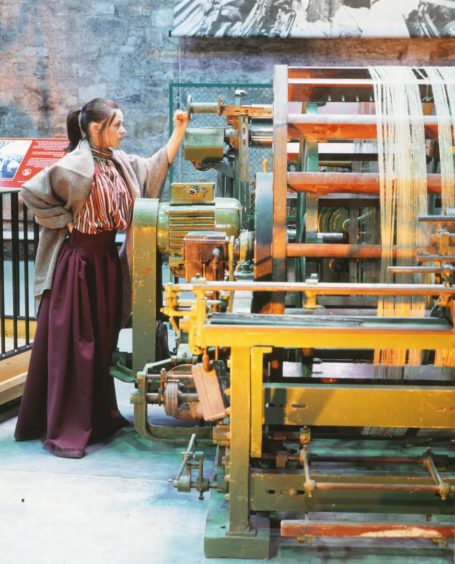Covered in ‘stour’ that clogged their eyes, mouths and noses, deafened by the ear-splitting din of the machinery, exhausted by the long shifts.
Those were the working conditions for more than 50,000 Dundonians in the city’s jute mills throughout the 19th century.
At night they would sleep four to a bed, an average of eight people to a house, usually with only two rooms and an outside toilet. Most meals consisted of potatoes or porridge and the average life expectancy for a man was just 33 years.
But as well as hardship there was camaraderie and laughter. The women of Dundee, who outnumbered men three to one in the mills, gained a reputation for their hard-drinking, feisty ways and often scandalised polite society with their antics.
Social history
This social history, and much more, was in danger of being lost as the mills, one by one, fell silent and became derelict when the city’s industrial era ended.
In the 1980s, a group of locals intent on preserving the city’s industrial heritage bought jute machinery that was being sold off at auction and began searching for a building to house them in– culminating in the purchase of Verdant Works in 1991.
Fast forward to today and the Verdant Works museum is celebrating its 25th anniversary after officially opening in 1996. It now enjoys popularity as one of the best-rated Dundee attractions on Trip Advisor.
Verdant Works
“Reaching our 25th anniversary is a big milestone as we don’t receive government funding and make most of our money by charging for admission, meaning that we have to work hard to compete with other attractions in the city”, said Gill Poulter, heritage and exhibitions director at Dundee Heritage Trust (DHT), the charity that runs the museum.
“The Verdant Works attracts such a wide variety of visitors. We get foreign tourists and also local school groups. The kids find it fascinating that at their age the Victorian children of Dundee would have been working in the mills.
“There can be this perception that industrial history is dull, and only for people who are interested in machinery and engineering. But it’s so much more than that – there’s so much social history. At one point half the working population of Dundee worked in the mills, so this history is a huge part of the city’s past.”
Jute industry
Gill joined DHT in 1994 to transform the crumbling building at West Henderson’s Wynd into a museum. Her job was to showcase Dundee’s jute history in a way that captures visitors’ imagination.
“There had already been a lot of work underway by the time I joined”, explained Gill. “The beginnings of the museum go back to 1980s, by which time Dundee’s industry was pretty much finished. Machines were being scrapped or shipped to India and buildings were demolished or left to crumble.
“A group of local people voiced concerns that this part of the city’s history would be lost forever unless someone did something about it. When the former Dundee College of Technology auctioned off the jute machinery from its textiles department, this group of people bought the machines with their own money.
Dundee Heritage Trust
“They formed Dundee Heritage Trust and got charitable status in 1985. Then the search began for a home for the machines. They looked at a number of textile works in the city but most were far too big for a museum.
“Verdant works was just the right size, however. It was a slow process to restore it – DHT would raise a bit of money and restore one part of the building, then later raise a bit more and restore another part. So it took a number of years to get it ready for visitors.
“There was a lot of support in the city for this initiative, but there were also people for whom it was still very raw. A lot of people had recently lost their jobs in the factories. The distance of time has now healed that somewhat.”
Verdant Works – a history
Verdant Works dates back to 1833, when most of the surrounding area was still green fields – hence the reference to ‘green’ in the name.
It started out life as a flax mill, built for merchant and flax pinner David Lindsay. Later it converted to producing jute and the complex expanded as more warehouses, batching areas and offices were added to the original building.
At the end of the 19th century and going forward into the 20th, Verdant Works no longer produced jute but re-cycled large amounts of it, cured rabbit skins and dealt in scrap metal.
Creating a museum
“The mill complex is A-listed, which means it is of national architectural importance. That is the same category as Edinburgh Castle”, marvels Gill.
“It’s quite rare for a mill building to have survived so intact. When people come to visit they think some parts have been recreated but it’s actually the original thing.
“It was a big challenge and a huge privilege to research all of the history connected to it and to create museum from a blank canvas.
Jute machinery
“We had original, working textile machinery, which we had to restore. Initially we weren’t sure whether we would switch it on for the public, or whether it was going to be static.
“But I remember, when someone plugged it one of the machines, I immediately I thought ‘we’ve got to show this to the public’. It was such a visceral feeling, hearing the sound of that machine.
“The noise was deafening, and to think that people were working in buildings with hundreds of these machines was incredible.”
The present-day museum
The museum has the equipment needed to take jute from raw fibre to finished cloth. The machines are accompanied by historic photographs, so visitors can see how the mill looked when it was in action.
A dedicated team of employees and volunteers lovingly maintains the machines, as well as the skills needed to operate them.
Meanwhile, a social history gallery tells the story of the everyday life of the mill workers. Most of them were women and children.
She-town
This gave Dundee the unique reputation of being a “she-town”, due to the women supporting the family. The unemployed men, meanwhile, stayed home to look after the babies and the home. These men were, perhaps rather unfairly, nicknamed ‘kettle bilers’.
“Textiles were traditionally seen as women’s work”, adds Jill. “In the Victorian era employment law or equal pay legislation didn’t really exist. It meant that employers could pay women less than men. So it suited the mill owners to employ women.
“The mill girls were renowned for being quite feisty. They earned the family money and they walked around the streets being loud and drank a lot. This scandalised many commentators of the time.”
Past and future
“The things that resonate with visitors are that, although Dundee had a unique jute history, there were also parallels with other industrial cities.
“People come and say ‘oh, my gran worked in a factory in England and life was similar for her’”. They can come to the museum and get a sense for what life would have been like for their older relatives”.
These days, Dundee Heritage Trust doesn’t solely focus on telling the stories of the past, but also campaigns to shape the future of the city.
Blackness regeneration
The organisation is lobbying for the revamp of the Blackness area, and to put forward the regeneration plan for Levelling Up funding – a government initiative to improve infrastructure, regenerate neglected areas and preserve cultural assets.
“We would like to thank the amazing staff, volunteers and board members involved in developing Dundee Heritage Trust over many years”, said Deirdre Robertson, CEO of Dundee Heritage Trust.
“The DHT board was delighted to see the Blackness regeneration plan gain council approval before lockdown. We are actively campaigning and working with interested individuals and groups in the area for the Blackness plan to be formally put forward by our local council and MP as the first Levelling Up funding bid for Dundee West.
Levelling Up
“If successful, it would see multimillion pounds of UK government investment come into the area and help drive more tourist traffic.
“Dundee is a top priority area for Levelling Up funding. We are optimistic of our chances and think investment in this often forgotten area of town with such rich heritage , tourism and retail potential would be a very wise and incredibly powerful, effective and long overdue investment.”
